The Matthias Church is one of Budapest’s most important churches. Many of Hungary’s kings were coronated here, and the church is home to important tombs and ecclesiastical treasures.
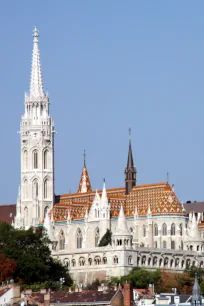
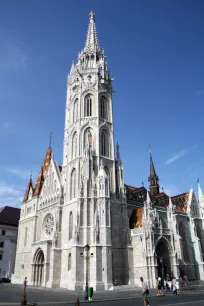
Officially known as The Church of Our Lady (Nagyboldogasszony templom), Budapest’s St. Matthias Church, like many of the city’s ecclesiastical structures, has a long and complicated history.
Construction
Matthias Church was built in 1255 along Trinity Square, in the heart of the Castle District, and was Buda’s first parish church. However, the original church structure changed many times as it was constantly being renovated and refashioned in the popular architectural style of each era.
The church takes its more common name from King Matthias, who ruled from 1458-90, well-known as a patron of the arts and enlightenment and revered for reconstructing the Hungarian state after years upon years of feudal anarchy.
Fall into Decay
In 1541, when the Turks captured Buda, The Church of Our Lady became a mosque. The ruling regime shipped precious ecclesiastical treasures off to Bratislava and, appallingly, whitewashed over the ornate frescoes that graced the walls of the church. Beautiful interior furnishings were stripped out and discarded.
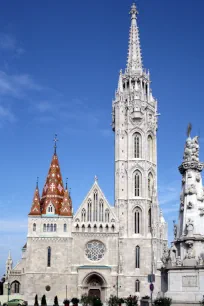
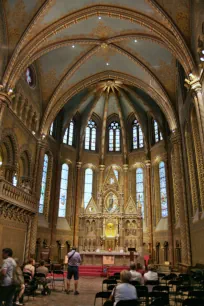
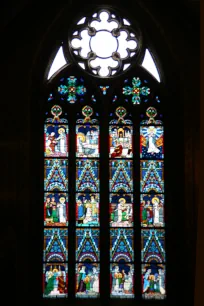
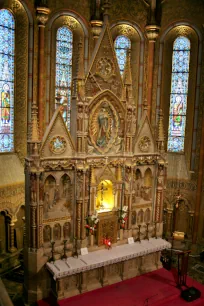
The church was ravaged during the liberation of Budapest from the Turks in 1686. The story goes that during the bombardment of Budapest by a European alliance, a wall of the church collapsed, revealing a sculpture of the Madonna to the praying Turks. Demoralized, they capitulated the following day.
The new occupants, the Jesuits, made attempts to restore the church in the popular Baroque style of the era. Most consider the attempts a failure.
Reconstruction
In the late nineteenth century, architect Frigyes Schulek is credited with largely restoring St. Matthias Church to its original splendor. Schulek, who also built the nearby Fisherman’s Bastion, adhered to the original thirteenth-century plans for the church and also uncovered a number of original Gothic elements lost for centuries. He added magnificent diamond patterned roof tiles and gargoyles, which visitors can still admire today. The reconstruction was completed in 1896.
Exterior
Very little remains of the original church, only the foundations, columns and some walls date back to the thirteenth century.
The smallest tower is known as the Béla Tower and is named after the founder of the church, king Béla IV, under whose reign the church was built. Its roof is decorated with colorful Majolica tiles. The main portal is decorated with bas-reliefs created by Lajos Lantai. Above the portal is a large neo-Gothic rose window, an exact replica of the original window.
The tallest tower is the Matthias-tower, originally built in the fifteenth century and named after the ruler of that era, King Matthias Corvinus. His coat of arms, emblazoned with a raven (corvus in Latin), is shown inside the church. Visitors enter the church via the Mary Portal, which is decorated with an exquisite Gothic relief, painstakingly reconstructed by Frigyes from original pieces.
Interior
The interior of the Matthias Church is magnificently decorated with colorful patterns and motifs that were found on original stone fragments. The frescoes on the wall were created by the two most important historical painters of the era, Bertalan Székely and Károly Lotz. They were also responsible for the magnificent stained-glass windows.
One of the highlights inside is the main altar, decorated with a neo-Gothic Triptych. The Loreto Chapel, beneath the South Tower, holds the statue of the Baroque Madonna, a replica of the original in the Italian village of Loreto.
The most magnificent monument in the church is the double sarcophagus of king Béla III and his wife Anne de Châtillon in the Trinity Chapel. The twelfth-century king was originally buried in Székesfehérvár; in 1848 archaeologists found his remains in the city’s ruined cathedral and transported it to the Matthias Church in 1860.
The church also has some relics and treasures, including the Matthias Chalice and a replica of the Hungarian Royal Crown (the original is on display in the Parliament Building).
- Next: City Park
- More Sights & Attractions in Budapest

